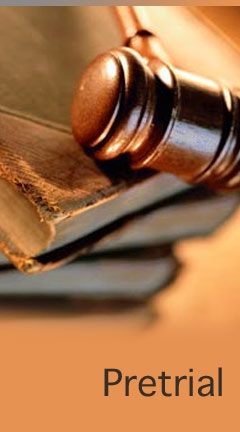Archival Notice
This is an archive page that is no longer being updated. It may contain outdated information and links may no longer function as originally intended.
Home | Glossary | Resources | Help | Course Map
Before trial, the expert will assist in preparing exhibits and demonstrative charts, tests and documents. Any demonstration should be tested before the trial or hearing.
Trial exhibits should be shown to opposing counsel in advance of trial, and either stipulation or court order approval should be obtained. These are easy ways to guarantee the admissibility of a key chart, exhibit, document or demonstration.
It is proper for the expert to ask the proffering attorney if these details have been satisfied. It is very disappointing if the expert prepares costly demonstrations or exhibits and they are rejected at trial because of inaccuracy or lack of foundation.
Exhibits and demonstrations must be accurate and technically correct. To be admissible, demonstrations must be substantially similar to the subject under litigation.
The expert, the attorney, and any other experts who will be testifying should be present at a final pretrial conference of experts. At this conference, all weaknesses in the case should be exposed and all strengths of the opposition should be examined. All testifying experts should coordinate testimony among themselves. A recalcitrant expert can be identified at this time. Inconsistencies in expert testimony should be disclosed.
This pretrial conference is a dress rehearsal for trial. Experts and attorneys should be brought to the peak of performance, using video or audio monitoring if necessary to identify flaws, weaknesses and idiosyncratic behavior.
Unnecessary exhibits and testimony should be eliminated before trial. The expert's calculations should be rechecked. Data should be summarized whenever possible. Raw data may be available in the courtroom, but the expert should refer to summaries for voluminous documents or other materials. New rules of evidence allow this use of summary data:
- The contents of voluminous writings, recordings, or photographs which cannot conveniently be examined in court may be presented in the form of a chart, summary, or calculation. The originals, or duplicates, shall be made available for examination or copying, or both, by other parties at a reasonable time and place. The court may order that they be produced in court. (Source: Federal Rule of Evidence 1006: Summaries.)
The large amount of evidence testing and raw material the expert may have evaluated before trial can enhance the weight of testimony. The data from which summaries are made must in all cases be available for examination by opposing counsel. Good practice dictates that such information be available well before trial and also be present in court for examination.
Preparation for trial is somewhat different from preparation for deposition. The attorney should explain to the expert the objectives of testimony and describe the physical setting of the hearing room or courtroom in detail, including positioning of the parties, the attorneys, and the judge and jury.
The attorney should outline the functions of the witnesses, attorneys, jury or other fact finder. In the absence of an outline, the information in this module will sufficiently prepare the expert for trial.
Additional Online Courses
- What Every First Responding Officer Should Know About DNA Evidence
- Collecting DNA Evidence at Property Crime Scenes
- DNA – A Prosecutor’s Practice Notebook
- Crime Scene and DNA Basics
- Laboratory Safety Programs
- DNA Amplification
- Population Genetics and Statistics
- Non-STR DNA Markers: SNPs, Y-STRs, LCN and mtDNA
- Firearms Examiner Training
- Forensic DNA Education for Law Enforcement Decisionmakers
- What Every Investigator and Evidence Technician Should Know About DNA Evidence
- Principles of Forensic DNA for Officers of the Court
- Law 101: Legal Guide for the Forensic Expert
- Laboratory Orientation and Testing of Body Fluids and Tissues
- DNA Extraction and Quantitation
- STR Data Analysis and Interpretation
- Communication Skills, Report Writing, and Courtroom Testimony
- Español for Law Enforcement
- Amplified DNA Product Separation for Forensic Analysts


